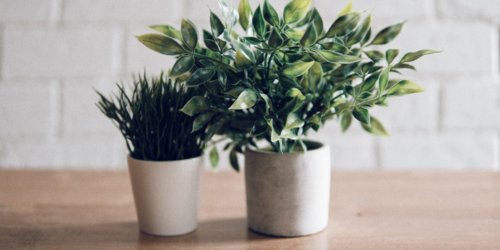Easy tips on how to move your plants
 Moving your plants to a new home can be a bit tricky, especially if it's your first time. But don't worry, we've got some helpful tips to make sure your plants stay happy and healthy during the move. Here's what you need to know:
Moving your plants to a new home can be a bit tricky, especially if it's your first time. But don't worry, we've got some helpful tips to make sure your plants stay happy and healthy during the move. Here's what you need to know:Before you start preparing:
Think about the time of year: It's best to move your plants during their dormant season when they're not growing much. This is usually in the winter when it's cold outside. Protect them from strong winds and bad weather if you're moving during this time. If you're moving in spring or fall, when the temperatures are average, that works too. Moving in the summer is a bit more challenging because it's dry and hot, but if you have to, keep the soil wet and spray the leaves with water.
Consider the soil and climate: Check if the soil and climate in your new home are suitable for your plants to grow. Different plants like different types of soil and weather, so it's important to make sure they'll be comfortable.
Talk to your new landlord: Make sure your landlord is okay with you bringing your plants along. It would be sad to find out later that you can't keep them in your new place.
Check with the moving company: Some moving companies don't move plants because they can be delicate. Before you choose a moving company, ask them if they're willing to move your plants and explain the situation.
Getting ready to move your plants:
About 3 weeks before the move:
If you're taking plants from your garden, make sure you dig them out with as much of the root as possible. Plants in clay pots should be moved to sturdy plastic pots.
Put your plants in bigger pots to give them some space. The soil should be moist, and it's best to do the transplanting in the mornings.
For plants in fragile pots, like ceramic ones, take them out and put them in plastic pots to protect them. Wrap the pots with something soft for extra safety.
Trim your plants by removing any extra leaves, dead parts, or branches. This will make them easier to pack and move.
Check for any diseases or bugs and treat them if needed. If a plant is not healthy by the moving day, it's better to leave it behind.
About 3 days before the move:
If you're moving in the winter, water your plants for the last time about 3 days before the move.
Pack smaller or hanging plants in boxes to keep them safe.
Gently tie the branches of your plants together to avoid damage during transportation.
Choose a special spot to keep your plants before the move. It should be visible so you don't forget them, but also out of the way for the movers.
On moving day:
Having a trolley can make moving your plants into the moving van easier. If you don't have one, ask the movers if they have a spare.
If you're moving a long distance and it's a warm day, check the moisture of the plants when you stop for a break.
Ask the moving team to place your potted plants at the back of the moving vehicle to prevent any damage.
After the move:
Check your plants for any damage as soon as you arrive at your new home. Remove any damaged leaves if you find any.
Take the plants out of their boxes and give them some water and plant food.
If you moved plants in plastic containers, wait about a week before transferring them back to their regular pots to avoid stressing them out.
If you're planting your plants in a new garden, prepare the area within a week so they can settle in their new home.
We hope these tips are helpful for your next move. Good luck with your plants in their new environment!
Next Article

